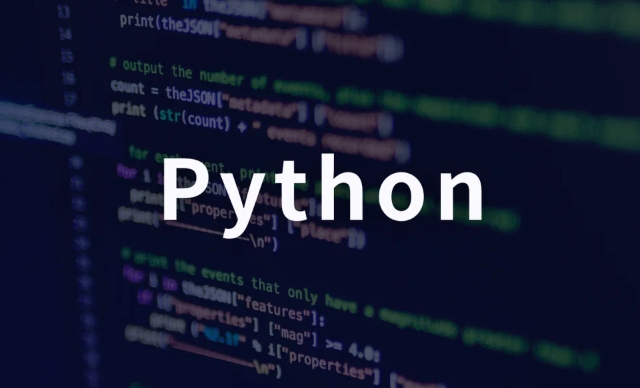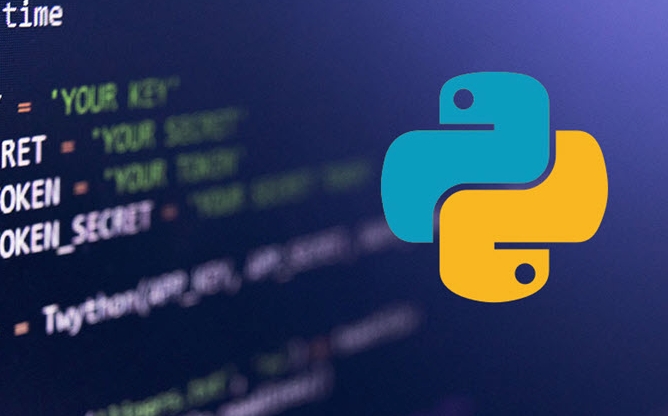Tuples are immutable sequence types that are suitable for storing fixed data. 1. Create tuples with brackets and commas to separate elements, and a single element needs to be added to avoid ambiguity; 2. The tuple is immutable, and the elements cannot be modified, but the entire variable can be reassigned; 3. Supports unpacking operations, and the tuple value can be assigned to multiple variables, and partial unpacking is achieved with the * operator; 4. Due to immutability, tuples can be used as dictionary keys, but lists cannot; 5. Supports connection, repetition and traversal operations, which are often used for function returns multiple values, and are lightweight and efficient. Pay attention to the details of commas and immutability when using.

Tuples in Python are immutable sequence types that are often used to store a set of related data. The following are several common examples to illustrate the basic usage and characteristics of tuples.

1. Create and access tuples
Tuples are defined in parentheses () , and elements are separated by commas:
# Create a tuple person = ("Alice", 25, "Engineer")
# Access elements in tuples (by indexing)
print(person[0]) # Output: Alice
print(person[1]) # Output: 25
print(person[2]) # Output: EngineerNote: Even if there is only one element, add a comma, otherwise it will be treated as a normal bracket expression:
single = (42,) # Correct: Tuple not_tuple = (42) # Error: Just an integer
2. Immutability of tuples
Once a tuple is created, its content cannot be modified:
coordinates = (10, 20) # coordinates[0] = 15 # An error will be reported: TypeError # But you can reassign the entire variable coordinates = (15, 20) # Legal: rebind the variable
This makes the tuple suitable for data that do not want to be modified, such as coordinates, dates, etc.

3. Tuple Unpacking
Values in tuples can be assigned to multiple variables at once:
person = ("Bob", 30, "Teacher")
name, age, job = person
print(name) # Output: Bob
print(age) # Output: 30
print(job) # output: Teacher Also supports partial unpacking and * operator:
numbers = (1, 2, 3, 4, 5) a, *b, c = numbers print(a) # 1 print(b) # [2, 3, 4] print(c) # 5
4. Use tuples as keys for dictionary
Because tuples are immutable, they can be used as keys for dictionaries, but lists do not:
location = {
(40.7128, -74.0060): "New York",
(34.0522, -118.2437): "Los Angeles"
}
print(location[(40.7128, -74.0060)]) # Output: New York5. Common operations: connection, repetition, traversal
# Concatenate two tuples t1 = (1, 2)
t2 = (3, 4)
t3 = t1 t2
print(t3) # (1, 2, 3, 4)
# Repeat tuple t4 = t1 * 3
print(t4) # (1, 2, 1, 2, 1, 2)
# traverse tuples for item in person:
print(item)Basically these common uses. Tuples are lightweight, safe and efficient, suitable for representing data with fixed structures. For example, they are very commonly used when functions return multiple values:
def get_name_age():
return "Charlie", 28
name, age = get_name_age() # Return a tuple and unpack itNot complicated but easily overlooked details such as commas and immutability.
The above is the detailed content of python tuple example. For more information, please follow other related articles on the PHP Chinese website!

Hot AI Tools

Undress AI Tool
Undress images for free

Undresser.AI Undress
AI-powered app for creating realistic nude photos

AI Clothes Remover
Online AI tool for removing clothes from photos.

Clothoff.io
AI clothes remover

Video Face Swap
Swap faces in any video effortlessly with our completely free AI face swap tool!

Hot Article

Hot Tools

Notepad++7.3.1
Easy-to-use and free code editor

SublimeText3 Chinese version
Chinese version, very easy to use

Zend Studio 13.0.1
Powerful PHP integrated development environment

Dreamweaver CS6
Visual web development tools

SublimeText3 Mac version
God-level code editing software (SublimeText3)

Hot Topics
 Polymorphism in python classes
Jul 05, 2025 am 02:58 AM
Polymorphism in python classes
Jul 05, 2025 am 02:58 AM
Polymorphism is a core concept in Python object-oriented programming, referring to "one interface, multiple implementations", allowing for unified processing of different types of objects. 1. Polymorphism is implemented through method rewriting. Subclasses can redefine parent class methods. For example, the spoke() method of Animal class has different implementations in Dog and Cat subclasses. 2. The practical uses of polymorphism include simplifying the code structure and enhancing scalability, such as calling the draw() method uniformly in the graphical drawing program, or handling the common behavior of different characters in game development. 3. Python implementation polymorphism needs to satisfy: the parent class defines a method, and the child class overrides the method, but does not require inheritance of the same parent class. As long as the object implements the same method, this is called the "duck type". 4. Things to note include the maintenance
 Python Function Arguments and Parameters
Jul 04, 2025 am 03:26 AM
Python Function Arguments and Parameters
Jul 04, 2025 am 03:26 AM
Parameters are placeholders when defining a function, while arguments are specific values ??passed in when calling. 1. Position parameters need to be passed in order, and incorrect order will lead to errors in the result; 2. Keyword parameters are specified by parameter names, which can change the order and improve readability; 3. Default parameter values ??are assigned when defined to avoid duplicate code, but variable objects should be avoided as default values; 4. args and *kwargs can handle uncertain number of parameters and are suitable for general interfaces or decorators, but should be used with caution to maintain readability.
 Explain Python generators and iterators.
Jul 05, 2025 am 02:55 AM
Explain Python generators and iterators.
Jul 05, 2025 am 02:55 AM
Iterators are objects that implement __iter__() and __next__() methods. The generator is a simplified version of iterators, which automatically implement these methods through the yield keyword. 1. The iterator returns an element every time he calls next() and throws a StopIteration exception when there are no more elements. 2. The generator uses function definition to generate data on demand, saving memory and supporting infinite sequences. 3. Use iterators when processing existing sets, use a generator when dynamically generating big data or lazy evaluation, such as loading line by line when reading large files. Note: Iterable objects such as lists are not iterators. They need to be recreated after the iterator reaches its end, and the generator can only traverse it once.
 Python `@classmethod` decorator explained
Jul 04, 2025 am 03:26 AM
Python `@classmethod` decorator explained
Jul 04, 2025 am 03:26 AM
A class method is a method defined in Python through the @classmethod decorator. Its first parameter is the class itself (cls), which is used to access or modify the class state. It can be called through a class or instance, which affects the entire class rather than a specific instance; for example, in the Person class, the show_count() method counts the number of objects created; when defining a class method, you need to use the @classmethod decorator and name the first parameter cls, such as the change_var(new_value) method to modify class variables; the class method is different from the instance method (self parameter) and static method (no automatic parameters), and is suitable for factory methods, alternative constructors, and management of class variables. Common uses include:
 How to handle API authentication in Python
Jul 13, 2025 am 02:22 AM
How to handle API authentication in Python
Jul 13, 2025 am 02:22 AM
The key to dealing with API authentication is to understand and use the authentication method correctly. 1. APIKey is the simplest authentication method, usually placed in the request header or URL parameters; 2. BasicAuth uses username and password for Base64 encoding transmission, which is suitable for internal systems; 3. OAuth2 needs to obtain the token first through client_id and client_secret, and then bring the BearerToken in the request header; 4. In order to deal with the token expiration, the token management class can be encapsulated and automatically refreshed the token; in short, selecting the appropriate method according to the document and safely storing the key information is the key.
 What are Python magic methods or dunder methods?
Jul 04, 2025 am 03:20 AM
What are Python magic methods or dunder methods?
Jul 04, 2025 am 03:20 AM
Python's magicmethods (or dunder methods) are special methods used to define the behavior of objects, which start and end with a double underscore. 1. They enable objects to respond to built-in operations, such as addition, comparison, string representation, etc.; 2. Common use cases include object initialization and representation (__init__, __repr__, __str__), arithmetic operations (__add__, __sub__, __mul__) and comparison operations (__eq__, ___lt__); 3. When using it, make sure that their behavior meets expectations. For example, __repr__ should return expressions of refactorable objects, and arithmetic methods should return new instances; 4. Overuse or confusing things should be avoided.
 How does Python memory management work?
Jul 04, 2025 am 03:26 AM
How does Python memory management work?
Jul 04, 2025 am 03:26 AM
Pythonmanagesmemoryautomaticallyusingreferencecountingandagarbagecollector.Referencecountingtrackshowmanyvariablesrefertoanobject,andwhenthecountreacheszero,thememoryisfreed.However,itcannothandlecircularreferences,wheretwoobjectsrefertoeachotherbuta
 Describe Python garbage collection in Python.
Jul 03, 2025 am 02:07 AM
Describe Python garbage collection in Python.
Jul 03, 2025 am 02:07 AM
Python's garbage collection mechanism automatically manages memory through reference counting and periodic garbage collection. Its core method is reference counting, which immediately releases memory when the number of references of an object is zero; but it cannot handle circular references, so a garbage collection module (gc) is introduced to detect and clean the loop. Garbage collection is usually triggered when the reference count decreases during program operation, the allocation and release difference exceeds the threshold, or when gc.collect() is called manually. Users can turn off automatic recycling through gc.disable(), manually execute gc.collect(), and adjust thresholds to achieve control through gc.set_threshold(). Not all objects participate in loop recycling. If objects that do not contain references are processed by reference counting, it is built-in







